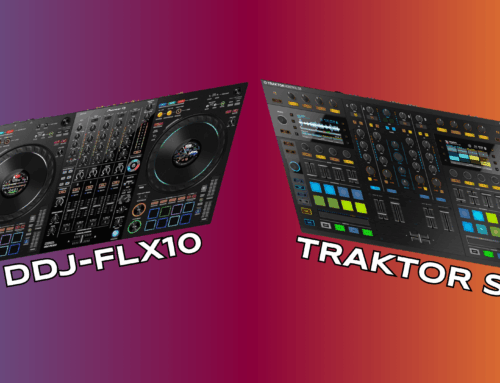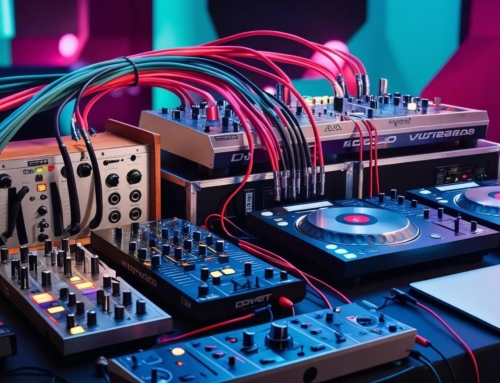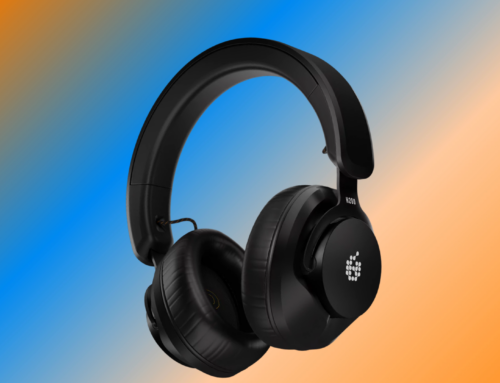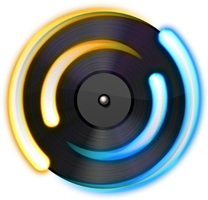 I remember using Deckadance once, a couple of years ago, not thinking much of it, and then forgetting it altogether. Apparently Image-Line, the makers, have done no such thing and the Deckadance 1.93 Club Edition I opened up to review is completely unfamiliar. It’s beautiful. It has a sleek elegance that I’m sure I would have remembered if it had been there before. And it’s packed with stuff. I mean, there are controls anywhere there’s not a browser window, all singing their siren songs, luring me to get in there and figure out what each one does.
I remember using Deckadance once, a couple of years ago, not thinking much of it, and then forgetting it altogether. Apparently Image-Line, the makers, have done no such thing and the Deckadance 1.93 Club Edition I opened up to review is completely unfamiliar. It’s beautiful. It has a sleek elegance that I’m sure I would have remembered if it had been there before. And it’s packed with stuff. I mean, there are controls anywhere there’s not a browser window, all singing their siren songs, luring me to get in there and figure out what each one does.
There’s the waveform for each deck, pretty standard although unfortunately there’s no zoom feature. There are good, simple nudge and tempo controls. There’s a loop section with a couple of features I like – a Leap button that triggers a loop while leaving a ghost of the playhead moving along in realtime, so that when you come out of the loop, you jump back ahead to where you would have been had you let the record run. Nice. The Downbeat button lets you identify the one beat, which is a great, simple solution for correcting beat grid issues when, say, a build lingers for a beat too long before dropping.
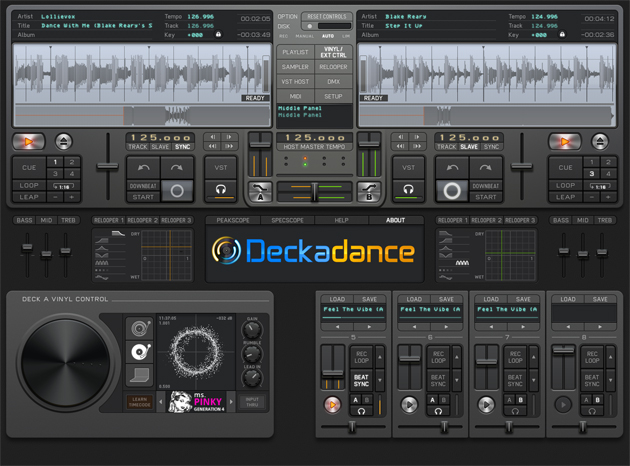
There’s no Cue-Play button, though. Strange. Why not put it next to the Cue button, instead of an Eject button made redundant by the drag-and-drop browser window three inches away?
The effects – four filters, flange, echo and bit-crusher – are standard fare, and if their routing options are limited, it’s partly made up for by the fun of playing them on an X-Y pad – and more than made up for by the capacity to host eight VSTs and route them across your decks individually. I love it. The EQs sound quite nice and they have momentary kill switches, which I like a lot. But the faders are tiny.
And it’s like this all the way through: some obvious features are missing or under-implemented, while there are really useful features everywhere you turn. Deckadance will read nine different types of control CD and vinyl. The hotcues are a bit awkward. It has peak and spectroscope views to line up the waveforms. It’s a VST host and a VST device; the Relooper function is a nice matrix-style way of chopping up beats into interesting fills; it has eight slots for one-shots and samples. That’s a lot of cool stuff.

Deckadance VST Host
But it only has two decks, and that alone puts it behind the eight-ball. The X-Y pad input for effects is small and, because it allows only two parameters to be modified, it’s restrictive. Relooper is a dog to program. The Automix function (really) is something no self-respecting DJ will touch – or maybe it’s just me – and it takes up precious screen estate. While the use of space is well done on the whole, you can’t help feeling a little cramped the whole time, and cramped doesn’t generally inspire creativity.

Deckadance Sampler
Deckadance is a strange, flavoursome beast, that’s for sure. I might get hauled over the coals for saying this, but maybe its oddities are what we should expect from the makers of Fruity Loops. The thing is, FL piled up fans in the face of the dominance of Logic and Cubase and later Ableton, and never made any apologies for its refusal to conform to orthodoxy. That’s a good thing, and I suspect that there will be plenty of people who love Deckadance the first time they try it, and never even bother to check out what else is out there. Time will tell, though, whether or not we ever see it on the big stages of the world.


